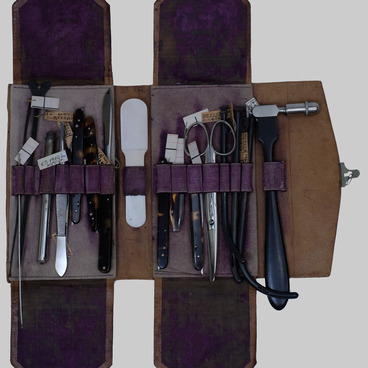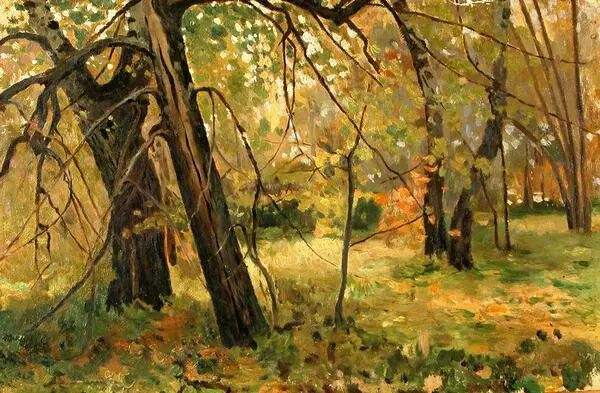The Chekhov’s family was generously blessed with talents, especially artistic ones. Brother Nikolai studied at the Moscow School of Painting, Sculpture and Architecture. Maria Pavlovna also became interested in painting in the 1890s. She entered the Stroganov School, and then continued her studies at the private studio of Alexandra Aleksandrovna Khotyintseva. Family’s friends Konstantin Korovin, Valentin Serova, Isaac Levitan helped her in every possible way to improve her talent. The writer’s sister was brilliantly gifted. Anton Pavlovich himself even found the similarity of her canvases with his literary works. However, the voluntary concern for the family and brother did not leave her any spare time for painting.
M. P. Chekhova’s sketches depict the Chekhovs' estate in Melikhovo and the village itself.
Anton Pavlovich bought the house in Melikhovo for his family in 1892. First, having settled in it, Chekhov built a road and a post office. Guests often came to him and the writer himself was required to travel to Moscow from time to time, and the off-roads were complete up to 80 kilometers from the city. The situation was the same with the mail. There was no post office in Melikhovo, but the writer’s extensive correspondence had to be received and sent somehow. For 7 years of living in the village, Chekhov built three schools, worked as a zemsky doctor, traveled around the district and received patients at home
As we can see in the sketch, the appearance of the manor house is very modest and simple. And it really was. The house in Melikhovo, as follows from Chekhov’s notes, was much more spacious than family’s Moscow apartments. It was a warm, bright mansion with an iron roof, a terrace and Venetian windows. But, according to the writer, it was built long ago, the ceilings were low, and ‘had a very stupid and naive look from the outside.’
However, Anton Pavlovich’s parents were happy in Melikhovo. The writer’s father took over the supervision of the estate, kept a diary, prayed a lot. And the mother, in addition to taking care of the children, met and treated the guests, maintained order and a warm atmosphere of the estate.
M. P. Chekhova’s sketches depict the Chekhovs' estate in Melikhovo and the village itself.
Anton Pavlovich bought the house in Melikhovo for his family in 1892. First, having settled in it, Chekhov built a road and a post office. Guests often came to him and the writer himself was required to travel to Moscow from time to time, and the off-roads were complete up to 80 kilometers from the city. The situation was the same with the mail. There was no post office in Melikhovo, but the writer’s extensive correspondence had to be received and sent somehow. For 7 years of living in the village, Chekhov built three schools, worked as a zemsky doctor, traveled around the district and received patients at home
As we can see in the sketch, the appearance of the manor house is very modest and simple. And it really was. The house in Melikhovo, as follows from Chekhov’s notes, was much more spacious than family’s Moscow apartments. It was a warm, bright mansion with an iron roof, a terrace and Venetian windows. But, according to the writer, it was built long ago, the ceilings were low, and ‘had a very stupid and naive look from the outside.’
However, Anton Pavlovich’s parents were happy in Melikhovo. The writer’s father took over the supervision of the estate, kept a diary, prayed a lot. And the mother, in addition to taking care of the children, met and treated the guests, maintained order and a warm atmosphere of the estate.




